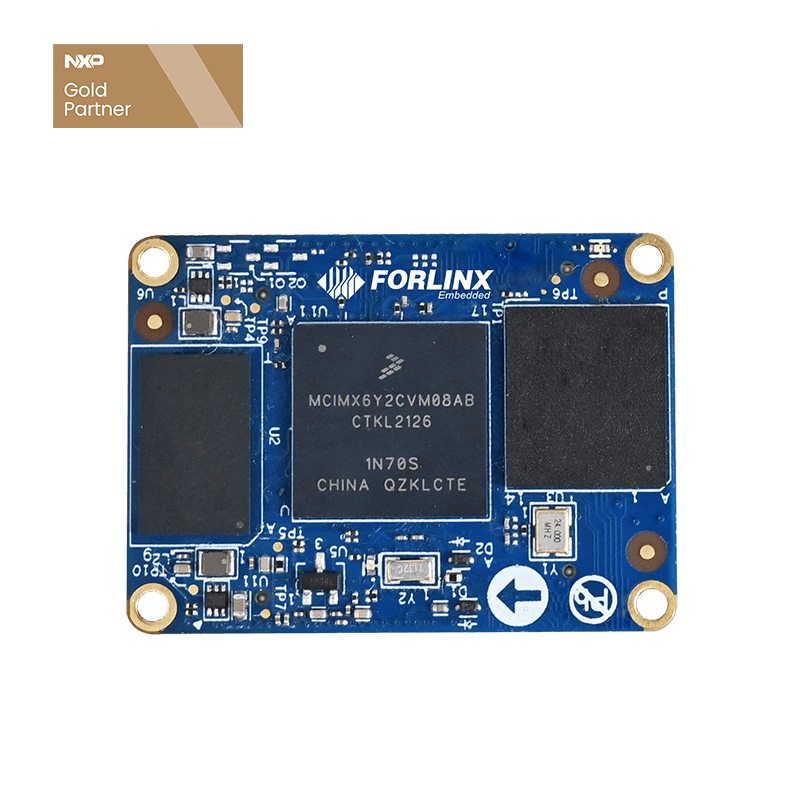
Building and Configuring Debian File System on iMX6ULL Platform
Note: Operate under the root user by default.
1. Qemu and Debootstrap Installation
Since a Debian file system is built on Ubuntu, these two tools can be installed directly using the apt-get command. The commands are as follows:
sudo apt-get install binfmt-support qemu qemu-user-static debootstrap
2. Extracting Debian File System
Use the debootstrap command to extract the file system. Execute the following command to retrieve the file system from the Debian mirror:
mkdir /home/forlinx/debian sudo debootstrap --arch=armhf --foreign buster root https://mirrors.tuna.tsinghua.edu.cn/debian/
Explanation of command parameters:
arch:Specify CPU architecture
buster:Debian version (currently 10)
foreign:Use when initializing unpacking in a different architecture than the host
root:The folder where the file system is stored
https: // mirrors.tuna.tsinghua.edu.cn / debian /:Download source
Extraction may take around 10 minutes. Please be patient. Successful extraction reveals the Linux directory tree. If extraction fails, try multiple attempts or switch networks.
3. Perfecting the File System
Since the operation is conducted on an X86 virtual machine, QEMU needs to be used to simulate an ARM environment to improve the file system.
a.To copy qemu-arm-static into the newly built base system, use the following command:
cd root sudo cp /usr/bin/qemu-arm-static usr/bin cd ..
b.Initialize the file system.
Execute the following command:
sudo DEBIAN_FRONTEND=noninteractive DEBCONF_NONINTERACTIVE_SEEN=true LC_ALL=C LANGUAGE=C LANG=C chroot root debootstrap/debootstrap --second-stage
c.Use the chroot root command to initialize file system
chroot root
d.Use the command to create the following
echo "proc /proc proc defaults 0 0" >> etc/fstab mkdir -p usr/share/man/man1/ mknod dev/console c 5 1
e.To update the download sources, use the command vi /etc/apt/sources.list to open the source.list file and replace the contents with the following:
deb http://mirrors.ustc.edu.cn/debian stable main contrib non-free #deb-src http://mirrors.ustc.edu.cn/debian stable main contrib non-free deb http://mirrors.ustc.edu.cn/debian stable-updates main contrib non-free #deb-src http://mirrors.ustc.edu.cn/debian stable-updates main contrib non-free #deb http://mirrors.ustc.edu.cn/debian stable-proposed-updates main contrib non-free #deb-src http://mirrors.ustc.edu.cn/debian stable-proposed-updates main contrib non-free
Then save and exit. Use the command apt-get update to update the source. If updating the download source reports an error,use the date command to modify the system time to solve the problem.
f.Use the command apt-get install vim to install some necessary software
apt-get install vim apt-get install sudo apt-get install dpkg apt-get install bzip2 apt-get install net-tools apt-get install ntpdate
g.Create a new user with the command adduser forlinx, then enter the password
adduser forlinx
h.Set the root password, use the command passwd root, and set the password to forlinx.
passwd root
i.To set up Ethernet, enter the following command:
vi /etc/network/interfaces
As follows:
#/etc/network/interfaces -- configuration file for ifup(8), ifdown(8) #The loopback interface auto lo iface lo inet loopback #Wireless interfaces iface wlan0 inet dhcp wireless_mode managed wireless_essid any wpa-driver wext wpa-conf /etc/wpa_supplicant.conf iface atml0 inet dhcp #Wired or wireless interfaces auto eth0 #iface eth0 inet dhcp #iface eth1 inet dhcp iface eth0 inet static address 192.168.0.232 netmask 255.255.255.0 gateway 192.168.0.1 broadcast 192.168.0.255 auto eth1 iface eth1 inet static address 192.168.1.232 netmask 255.255.255.0 gateway 192.168.1.1 broadcast 192.168.1.255 #Ethernet/RNDIS gadget (g_ether) #... or on host side, usbnet and random hwaddr iface usb0 inet static address 192.168.7.2 netmask 255.255.255.0 network 192.168.7.0 gateway 192.168.7.1 #Bluetooth networking iface bnep0 inet dhcp
Add a network reboot
cd etc/rc5.d/ vi /etc/rc5.d/S02net_restart.sh
As follows:
#!/bin/bash echo "network restarting!" /etc/init.d/networking restart echo "network restart complete!"
j.Modify host name
vi /etc/hostname
Modify to: Debian
k.Modify the system time zone
cp /usr/share/zoneinfo/Hongkong /etc/localtime ntpdate ntp.aliyun.com
Take East Zone 8 as an example, other time zone files are also included under this path.
l.Since 6ull is weak, skip installing the desktop and go straight to using the exit
m.Just exit the qemu environment
exit
4. Package the file system
Go to the debian filesystem directory and use the command tar - cjf rootfs.tar.bz2. / * to package it.
5. Burn-in verification
Place the packaged file system into the burner, while keeping the other images as they are and only replacing the file system. Then proceed with the burn-in test.
6. Debian command
a.Check Debian version
cat /etc/issue
b.Install wget
apt-get install wget
Solve ERROR: The certificate of ‘packages.microsoft.com’ is not trusted. Report error,then add -- no - check - certificate after the command.
Appendix: Installation Method for .net on Linux
1. Download the .net compressed package from the official website
https://dotnet.microsoft.com/en-us/download/dotnet/6.0
2. Enter the /home/root directory
cd /home/root
3. Install script settings
vi install.sh
The script is as follows:
#!/bin/sh DOTNET_FILE=dotnet-sdk-6.0.402-linux-arm.tar.gz export DOTNET_ROOT=$(pwd)/.dotnet mkdir -p "$DOTNET_ROOT" && tar zxf "$DOTNET_FILE" -C "$DOTNET_ROOT" export PATH=$PATH:$DOTNET_ROOT:$DOTNET_ROOT/tools
DOTNET_FILE is the name of the downloaded zip file.
4. Execute the installation
chmod u+x install.sh ./install.sh
5. Modify environment variables
vi /etc/profile
As follows:
export DOTNET_ROOT=$HOME/.dotnet export PATH=$PATH:$HOME/.dotnet:$HOME/.dotnet/tools
6. Test
Enter the following command:
dotnet new console -o sample1 cd sample1 dotnet run
The following output should be seen:
Hello World!





